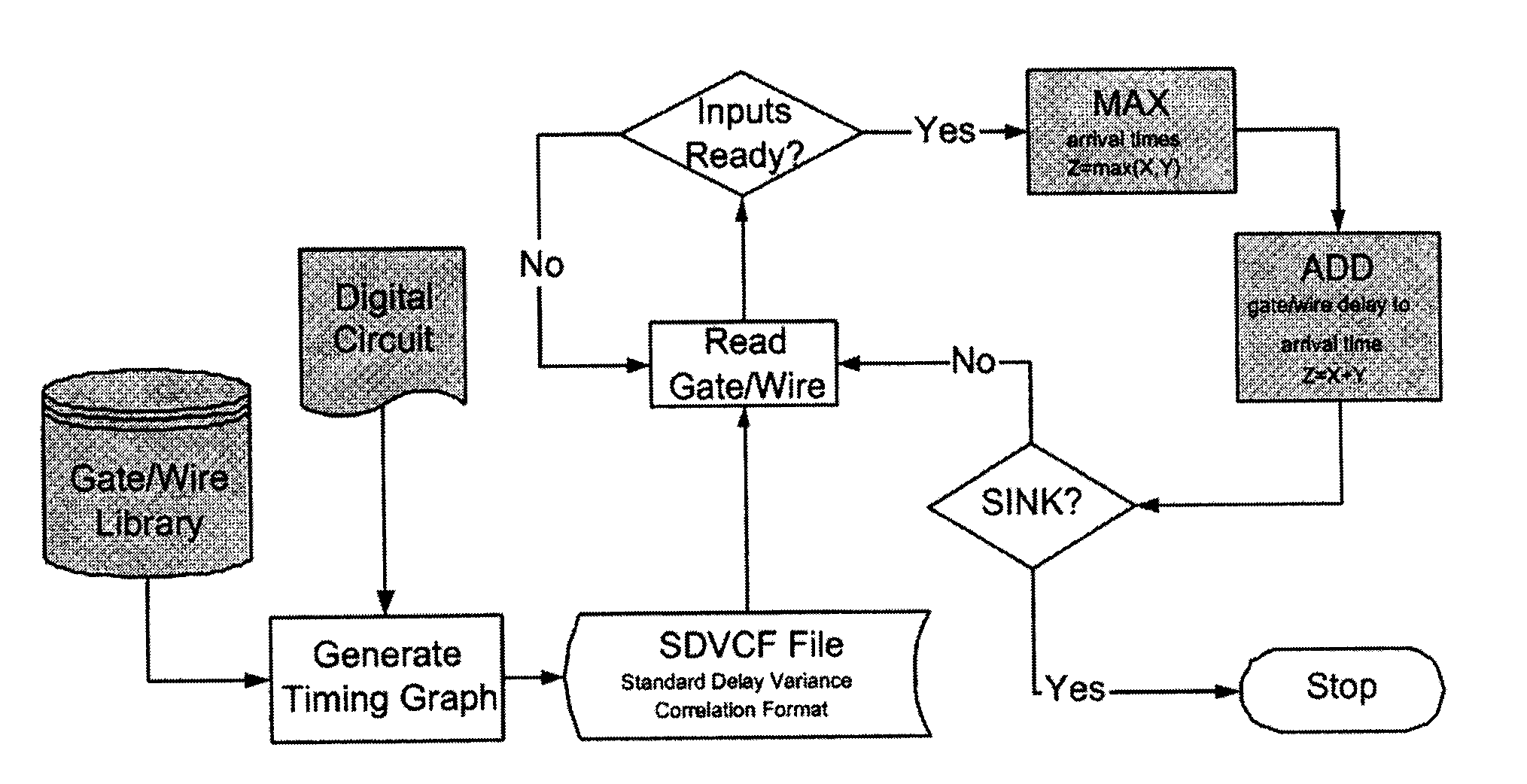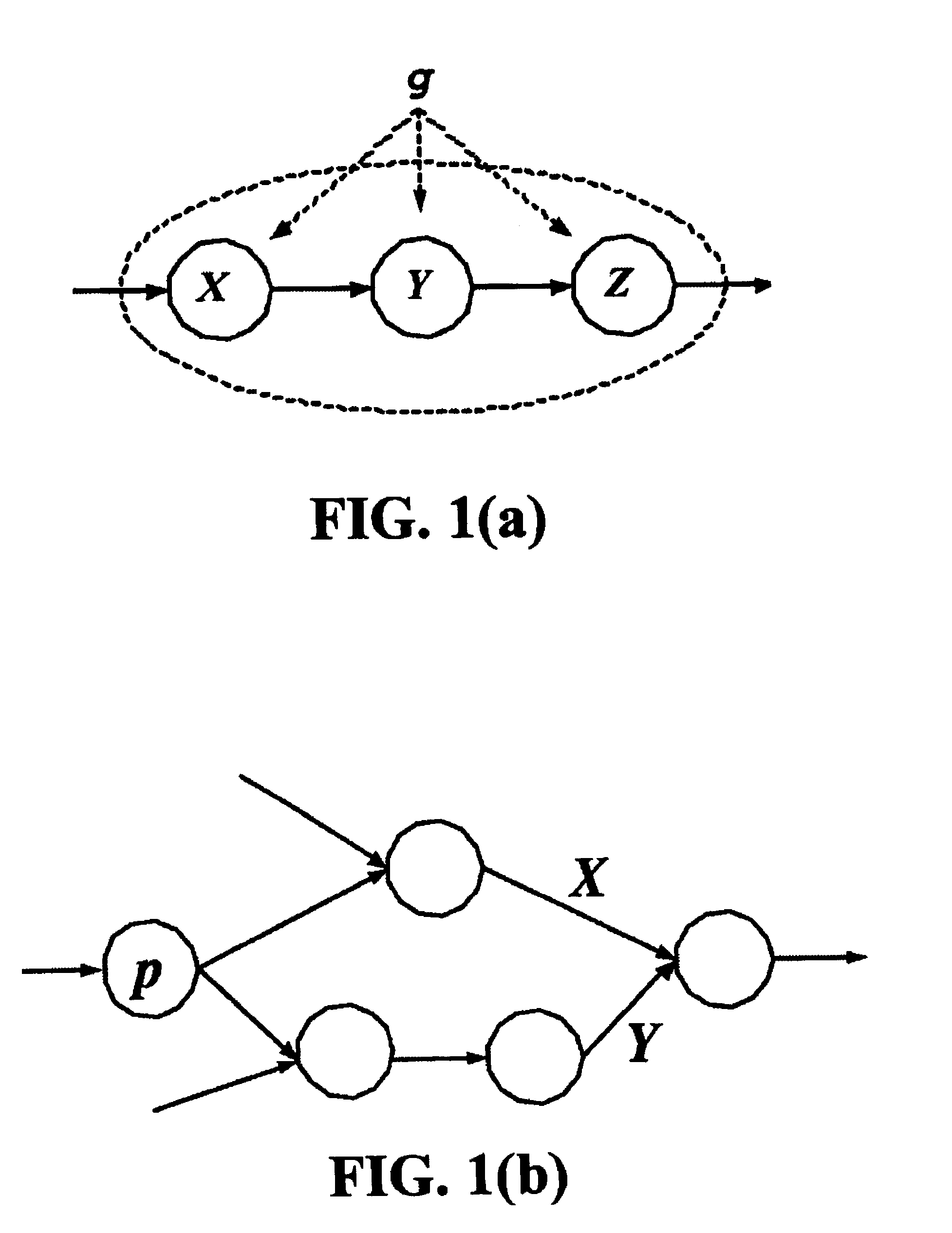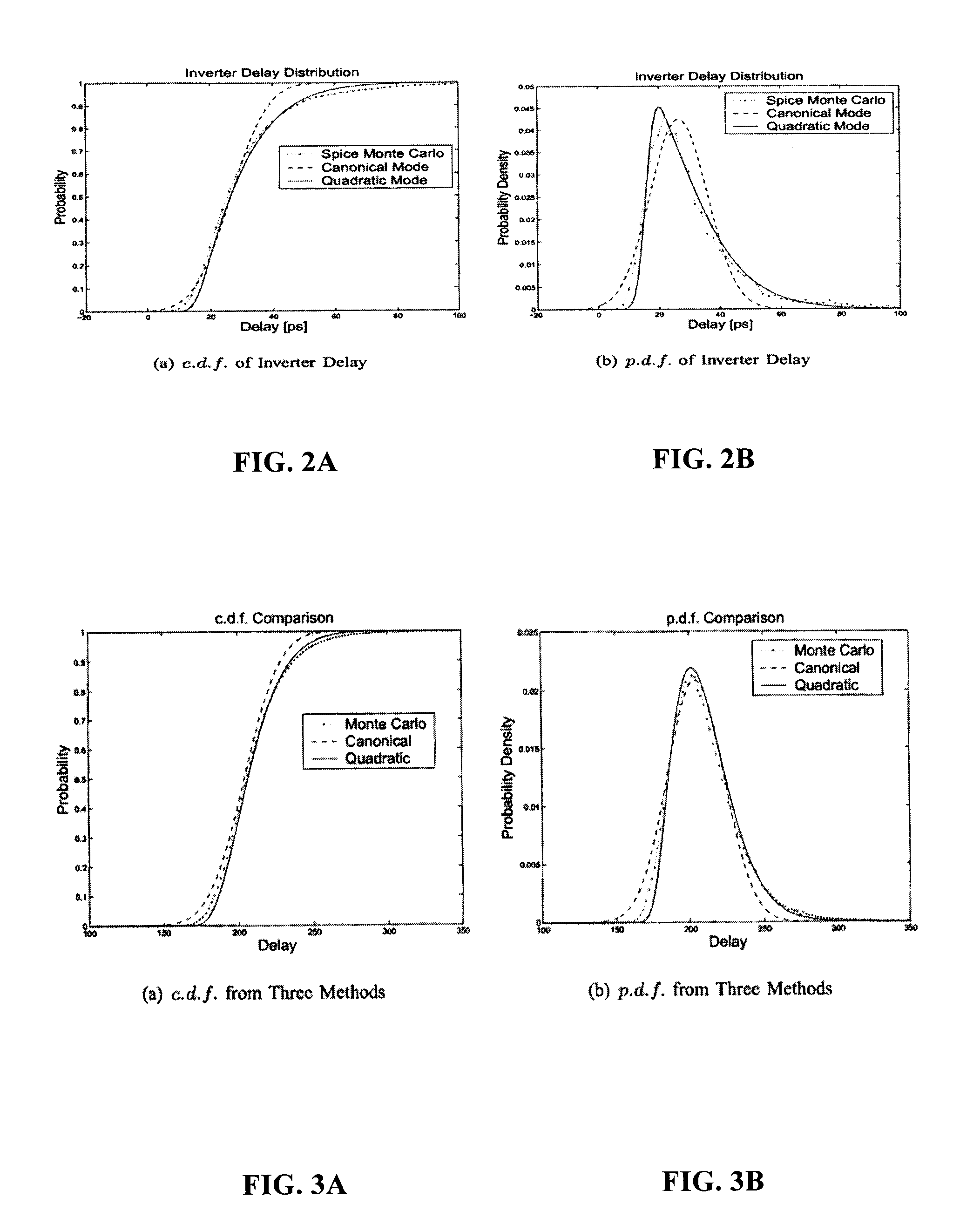Efficient statistical timing analysis of circuits
a statistical timing analysis and integrated circuit technology, applied in stochastic cad, instruments, cad techniques, etc., can solve the problems of increasing the number of delays, increasing increasing the susceptibility to noise, so as to reduce the computational burden of the max operation, reduce the size of the tuple mt, and reduce the number of delays
- Summary
- Abstract
- Description
- Claims
- Application Information
AI Technical Summary
Benefits of technology
Problems solved by technology
Method used
Image
Examples
Embodiment Construction
.
[0027]The following Section A of this document discusses an improved timing model, referred to herein as the quadratic timing model, which can be used to represent all delay elements (both nodes and edges) in a circuit with very high accuracy (approaching that of Monte Carlo simulation). A preferred form for the quadratic timing model represents the signal delay D of each element in a circuit as:
D=μD+∑j=1NαjRj+∑i=1MβiGi+∑i=1M∑k=1MΓi,kGiGk
wherein:[0028]μD is a nominal expected value for signal delay D;[0029]N is the number of signal delays in the circuit;[0030]αj is a weight, referred to as a node sensitivity coefficient, which reflects the dependence of the signal delay D on signal delay j in the circuit;[0031]Rj is a local variation reflecting the uncertainty in the value of signal delay D localized in the signal delay j;[0032]M is the number of global variations in the circuit;[0033]Gi and Gk are global variations reflecting the uncertainty in the value of signal delay D, with su...
PUM
 Login to View More
Login to View More Abstract
Description
Claims
Application Information
 Login to View More
Login to View More - R&D
- Intellectual Property
- Life Sciences
- Materials
- Tech Scout
- Unparalleled Data Quality
- Higher Quality Content
- 60% Fewer Hallucinations
Browse by: Latest US Patents, China's latest patents, Technical Efficacy Thesaurus, Application Domain, Technology Topic, Popular Technical Reports.
© 2025 PatSnap. All rights reserved.Legal|Privacy policy|Modern Slavery Act Transparency Statement|Sitemap|About US| Contact US: help@patsnap.com



